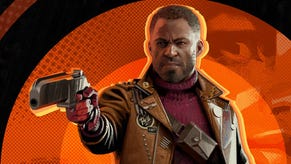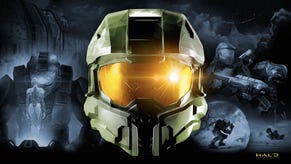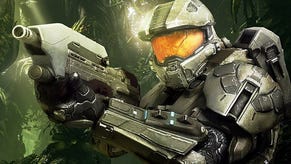Halo 2 on PC is the best Master Chief Collection port yet
And the Anniversary upgrades look great at 4K60.
A mere 13 years on from its initial release, Halo 2 has been re-released on PC as part of The Master Chief Collection - an ongoing enterprise that has attracted as much criticism as praise. So how does this port from the Xbox One conversion of Saber Interactive's Xbox 360 original fare? What extras does it bring to the table, how well does it run - and does it manage to avoid the problems and issues of some of the other games in the PC collection?
With three games from the whole package now available to PC users, the good news is that in my opinion, this is the best release so far - and I'd also rate is a clear upgrade over the existing PC rendition of the game. Its greatest advantage comes from the inclusion of the remastered assets, kicking off in spectacular style with the replacement of the original's in-engine cinematics with stunning pre-rendered videos delivered by Blur Studios. Beyond that, there are the graphical and audio engine changes to Halo 2 itself, where nearly every single aspect of the overall presentation has been updated and improved. Just like Halo: Combat Evolved, you can switch between the modern graphical presentation and the old instantaneously with a single keyboard press (TAB on PC). It's a cute trick, but goes beyond visual flourishes alone - the revised soundtracks is excellent and the revamped audio is especially impressive.
While the first Halo's Anniversary revamp fell a little flat, the sequel is something else. As I see it, Halo 2 is a game with a slightly awkward audio and visual presentation - the original design for the game aimed for a greater usage of bump mapping, real-time physics, and even more complex level design and it's difficult to avoid the conclusion that the original Xbox couldn't quite cope. The first Halo still stands up to scrutiny today - its more simplistic geometry is offset by its vibrancy in colour, great usage of tiling textures and some timeless material work. The sequel just doesn't quite work for me in the same way.
Another reason why Halo 2 has a very particular look is due to a radical change that happened in its development cycle - as you'll see in the video embedded below, the sequel was originally going to use a Doom 3-style rendering engine, focusing purely on real time lighting with hard stencil shadows. When you look at screenshots from this renderer, you can see how the bump mapping comes to life with real-time lighting and shadows, just as it does in Doom 3. So when this engine - dubbed 'pstencil' - was dropped in place for more traditional baked shadow maps, I think there were consequences for the game's eventual presentation: many of the areas look flatly lit, or even unlit, with barely visible shadows.
This is the key area where the Anniversary revamp make a difference: Saber Interactive give directional lighting a huge push with real-time shadow maps, while generally increasing the contrast across the entire image. Also helping is the use of screen-space ambient occlusion to give shadowed areas more diversity, while the Anniversary graphics also use baked light maps that include global illumination. On top of this, other effects are added - like parallax occlusion mapped textures that give the ground and wall surfaces more detail, or parallax mapped bullet decals when you shoot ballistic weapons at metal walls. On top of the generally more vibrant colours scheme, there are also some really nice lens flares from the sun or plasma effects, along with impressive particle effects that receive lighting and shadowing information. Where the original Halo 2 felt a little flat, the Anniversary edition adds vibrancy and consistency lacking in the original, while not dramatically changing the art style of the game.
Then there is the audio - Halo 2 Anniversary comes furnished with a remade score by Skywalker Sound, adding a much greater dramatic emphasis in many scenes, with a different default music mix. Ambient audio and weapon effects are also radically improved with their greater bass and impact make the basic act of firing a weapon more visceral and enjoyable. When you combine the audio and visual improvements, I think this is easily the best way to experience the game, but how good is the new PC port?
High frame-rate gaming is an essential feature, especially for an FPS. Halo: Combat Evolved supported frame-rates above 60fps with some screen elements like screen-shakes, antennae movement and plasma shots only animating at half-rate 30fps. Meanwhile, Halo Reach had a completely broken high frame-rate option where 120fps looked and felt worse than 60fps, with obvious pacing problems in mouse movement and animation. Looking back it really was dreadful. Halo 2 is a big improvement but it isn't quite perfect. Third person character animation, world physics and screen movements run as they should beyond 60fps, though Covenant plasma projectiles and the main characters' hand animations only run at 60fps, looking jittery and out of step. This should be fixed and hopefully won't cause too many problems for the developers.
In general, the games in the Master Chief Collection have suffered from internet connectivity issues in co-op play and unfortunately, this remains the case with this new title, where non-host players are often subject to intense lag that is way more impactful than it should be. Adding to the sense that Halo's crucial co-op component isn't where it should be, the new port also omits the split-screen play found in the console versions.
Performance-wise, Halo 2 checks out just fine, as you would hope. Mainstream GPUs like Nvidia's GTX 1060 and AMD's RX 580 deliver decent 1440p experiences when the Anniversary graphics are active and by our reckoning, cards like GTX 1660 Super or GTX 1070 would be needed for similar 4K play. In common with prior Master Chief games, PC users can also enjoy enhanced visual settings that go beyond what the title delivers on Xbox One and Xbox One X. That said, I only really noticed two changes when engaging enhanced graphics: the resolution of real-time shadow maps is improved, while there's also an increase in texture resolution - which requires the entire level to be reloaded. Curiously, Nvidia seems to enjoy a big advantage performance-wise in our testing, with RX 580 lagging quite some way behind.
One aspect of performance does baffle me though: while playing cooperatively with a friend, I noticed some odd hitching on the Delta Halo level. I had observed one or two hitches prior to that, but here, the game was constantly stuttering for prolonged periods of time, while my co-op partner had the exact same thing happening in their game as well. Thinking it might be a network issue, I double-checked on another PC and the same effect kicked in with a similar level of severity. It's not a pretty sight - we're dealing with 100ms, 200ms and even 400ms stutters in relatively rapid succession. The game genuinely felt pretty poor to play in such areas and differences in hardware did not seem to matter: the issue kicked in on Ryzen 9 and Core i5 systems, and I also checked using both NVMe and SATA SSDs which were both equally impacted.
Wondering what was going on here, I gave the Xbox One X version of the game a quick test. On the same Delta Halo level, performance is constantly switching between 60fps and 30fps, feeling extremely inconsistent to play. I honestly do not remember this happening the first time I played the game on the X, so maybe this arrived with the enhanced 4K patch. Whether you're playing this level on PC or Xbox One, I feel it could really use some work from the developers. And on the console front, perhaps that would help in clearing up performance problems elsewhere within the game. And I think this kind of glitchiness sums up a more global issue surrounding this project - there's always the lingering sense that while the Master Chief Collection was put together with the best intentions, the component games never feel as polished as they should be.
All told though, I did enjoy returning to Halo 2 and despite the issues, I do feel that it's best game in The Master Chief Collection for PC so far. The remade graphics scale rather well to 4K, the system requirements are not onerous - and crucially, it is a more than worthy replacement for the 2007 PC release. Let's hope an even better turn-out from the upcoming Halo 3.











